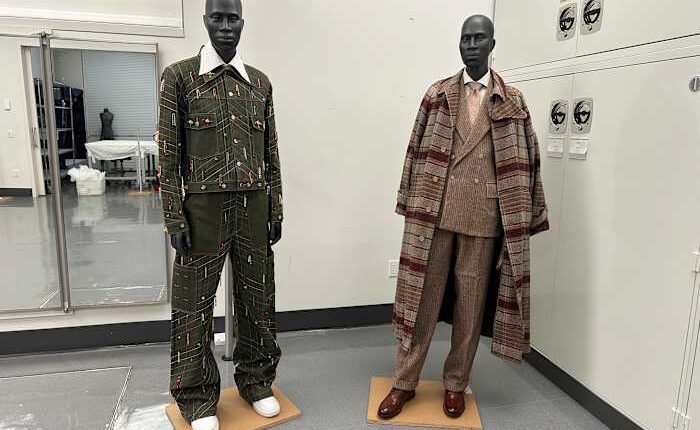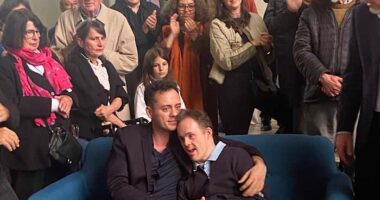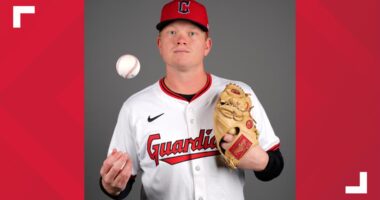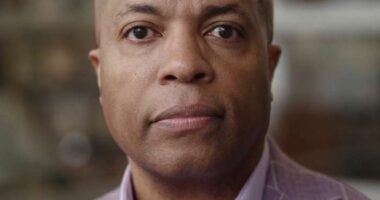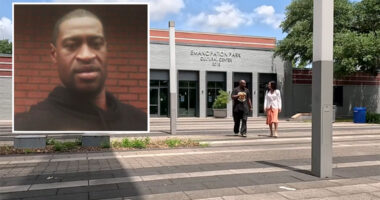
NEW YORK – What’s in a suit?
The curators responsible for preparing the latest Met Gala exhibit emphasize that it’s about much more than just tailoring. The exhibit will delve into themes of history, culture, identity, power, and above all, self-expression.
Titled “Superfine: Tailoring Black Style,” the upcoming spring exhibition at the Costume Institute of the Metropolitan Museum of Art will kick off with the star-studded Met Gala on May 5. This will mark the first time a Met show focuses solely on Black designers and the first menswear-themed exhibition in over two decades.
The dress code for the gala is always inspired by the exhibit, and this year’s theme, “Tailored For You,” encourages attendees to showcase their creativity while adhering to the principles of traditional tailoring.
In other words, expect a lot of great suits.
“Everything from Savile Row to a track suit,” quipped guest curator Monica L. Miller, a Barnard College professor of Africana studies, considering the versatility of a suit. She sat recently in a conference room at the Met with photos and notes plastered on the walls. She was in the middle of writing descriptive labels for the more than 200 items in the show — an exhaustive (and exhausting) task.
The suit, Miller said, “represents so many things.” And tailoring, she added, is a very intimate process.
“It’s not just about getting a suit that fits you physically,” Miller said, “but, what do you want to express that night?
It was Miller’s 2009 book, “Slaves to Fashion: Black Dandyism and the Styling of Black Diasporic Identity,” that inspired the show and led Andrew Bolton, curator of all the blockbuster Costume Institute shows, to bring her in as guest curator. The show uses dandyism as a lens through which to explore the formation of Black style over the years.
“Dandyism was about pushing boundaries,” Miller said.
Behind her, a section of wall was devoted to each of the 12 themes that divide the exhibit: Ownership, presence, distinction, disguise, freedom, champion, respectability, jook, heritage, beauty, cool and cosmopolitanism.
The early sections will begin with the 18th century and focus more on historical artifacts, with later sections looking at the 20th century and beyond. In addition, each section will begin with historic garments, accessories or photographs, and end with contemporary fashion.
Getting the first look at all this, on the traditional first Monday in May, will be a high-powered crowd from the worlds of entertainment, fashion, sports and beyond. Gala co-chairs this year are musician-designer Pharrell Williams, Formula 1 star Lewis Hamilton, actor Colman Domingo and rapper A$AP Rocky; NBA superstar LeBron James is honorary chair.
If that weren’t enough star power, this year, there’s an additional host committee with athletes like Simone Biles and Jonathan Owens, Hollywood figures like Spike Lee and Ayo Edebiri, musicians like Janelle Monáe and André 3000, author Chimamanda Ngozi Adichie and other artists, playwrights and fashion figures.
As each year during cocktail hour, they and other guests will be free to put their drinks aside and tour the exhibit before the lavish dinner begins. This year, exquisitely tailored celebrities will examine other examples of exquisite tailoring — as well as historical artifacts like a horse jockey uniform worn between 1830 and 1840.
In an installation room late last month, a museum staffer worked painstakingly on restoring those jockey trousers, a pin cushion at the ready. Near her, two items were already hanging on mannequins. One was a classic Jeffrey Banks suit from 1987, a double-breasted jacket and trousers paired with a dapper plaid wool coat, the ensemble finished off with a light pink tie.
“See how the coat and suit play off each other,” noted Miller.
Next to it was a very different kind of suit — a denim jacket and trousers embellished throughout with beads — by a far less widely known designer: Jacques Agbobly, whose Brooklyn-based label aims to promote Black, queer and immigrant narratives as well as his own Togolese heritage.
The show makes a point, Miller said, of highlighting designers who are well known and others who are not, including some from the past who are anonymous. It will veer across not only history but also class, showing garments worn by people in all economic categories.
Because there are not many existing garments worn or created by Black Americans before the latter part of the 19th century, Miller said, the early part of the show fills out the story with objects like paintings, prints, some decorative arts, film and photography.
Among the novelty items: The “respectability” section includes civil rights activist W.E.B. Du Bois’ receipts for laundry and tailoring. “He’d go to Paris and London, he would visit tailors and have suits made there,” she said.
And the “jook” section includes a film clip of the tap-dancing Nicholas Brothers — who in 1943’s “Stormy Weather” produced one of the most astounding dance numbers ever to appear on film.
“We wanted to show people moving in the clothes,” Miller explained. “A fashion exhibit is frustrating because you don’t see people in the clothes.”
Miller wondered aloud whether there might be a stretch material in the pair’s tuxedos (they perform multiple splits coming down a staircase). She also noted that the tuxedo, like the suit in general, is a garment that cuts across social categories. “If you are at a formal event the people serving are also in tuxedos, and sometimes the entertainment is in tuxedos, too,” she said.
“It’s a conversation about class and gender.”
The exhibit opens to the public on May 10 and runs through Oct. 26.
Copyright 2025 The Associated Press. All rights reserved. This material may not be published, broadcast, rewritten or redistributed without permission.
